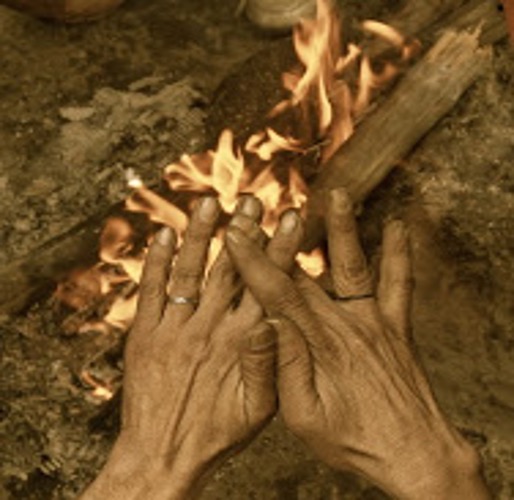
The Winter of Listening
by David Whyte
No one but me by the fire,
my hands burning
red in the palms while
the night wind carries
everything away outside.
All this petty worry
while the great cloak
of the sky grows dark
and intense
round every living thing.
What is precious
inside us does not
care to be known
by the mind
in ways that diminish
its presence.
What we strive for
in perfection
is not what turns us
into the lit angel
we desire,
what disturbs
and then nourishes
has everything
we need.
What we hate
in ourselves
is what we cannot know
in ourselves but
what is true to the pattern
does not need
to be explained.
Inside everyone
is a great shout of joy
waiting to be born.
Even with the summer
so far off
I feel it grown in me
now and ready
to arrive in the world.
All those years
listening to those
who had
nothing to say.
All those years
forgetting
how everything
has its own voice
to make
itself heard.
All those years
forgetting
how easily
you can belong
to everything
simply by listening.
And the slow
difficulty
of remembering
how everything
is born from
an opposite
and miraculous
otherness.
Silence and winter
has led me to that
otherness.
So let this winter
of listening
be enough
for the new life
I must call my own.
“The Winter of Listening” by David Whyte, from The House of Belonging. © Many Rivers Press, 1997.
Photography Credit: Detail from “Seeking Warmth”: A Kashmiri man warms his hands over a fire on a street on a cold morning in Srinagar, India,” by Fayaz Kabli/Reuters.
Poem and photograph found on A Year of Being Here: daily mindfulness poetry by wordsmiths of the here & now.






 This morning, I walked in the forest. In a moment of joy, I closed my eyes and stretched wide my arms to drink in the cool silence. When my eyes opened, they focused on a majestic old ponderosa, barren and gray, yet still standing with unmistakable dignity.
This morning, I walked in the forest. In a moment of joy, I closed my eyes and stretched wide my arms to drink in the cool silence. When my eyes opened, they focused on a majestic old ponderosa, barren and gray, yet still standing with unmistakable dignity. My husband and I recently gave four Navajo Churro sheep to the Navajo Nation. The tribe has a saying: Dibé éí Diné be’iiná at’é, sheep is life. They developed the Churro to thrive in the desert, beginning in the 16th century from Spanish stock. Twice, the US government tried to annihilate the breed. Only recently have they been brought back from the edge of extinction. My husband, Hal Cannon, and I acquired a few after Hal
My husband and I recently gave four Navajo Churro sheep to the Navajo Nation. The tribe has a saying: Dibé éí Diné be’iiná at’é, sheep is life. They developed the Churro to thrive in the desert, beginning in the 16th century from Spanish stock. Twice, the US government tried to annihilate the breed. Only recently have they been brought back from the edge of extinction. My husband, Hal Cannon, and I acquired a few after Hal